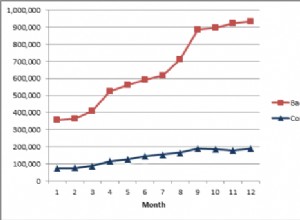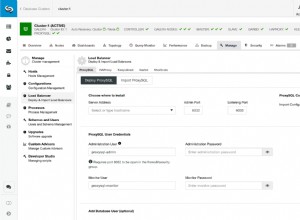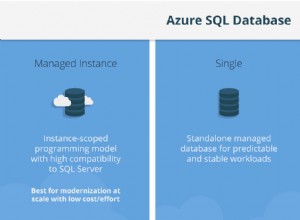Ich habe auch hier zu diesem Thema gebloggt. Hier ist ein Ausschnitt, der veranschaulicht, wie dies geschehen kann:
try (CallableStatement call = c.prepareCall(
"declare "
+ " num integer := 1000;" // Adapt this as needed
+ "begin "
// You have to enable buffering any server output that you may want to fetch
+ " dbms_output.enable();"
// This might as well be a call to third-party stored procedures, etc., whose
// output you want to capture
+ " dbms_output.put_line('abc');"
+ " dbms_output.put_line('hello');"
+ " dbms_output.put_line('so cool');"
// This is again your call here to capture the output up until now.
// The below fetching the PL/SQL TABLE type into a SQL cursor works with Oracle 12c.
// In an 11g version, you'd need an auxiliary SQL TABLE type
+ " dbms_output.get_lines(?, num);"
// Don't forget this or the buffer will overflow eventually
+ " dbms_output.disable();"
+ "end;"
)) {
call.registerOutParameter(1, Types.ARRAY, "DBMSOUTPUT_LINESARRAY");
call.execute();
Array array = null;
try {
array = call.getArray(1);
System.out.println(Arrays.asList((Object[]) array.getArray()));
}
finally {
if (array != null)
array.free();
}
}
Oben wird gedruckt:
[abc, hello, so cool, null]
Beachten Sie, dass ENABLE / DISABLE Die Einstellung ist eine verbindungsweite Einstellung, daher können Sie dies auch über mehrere JDBC-Anweisungen tun:
try (Connection c = DriverManager.getConnection(url, properties);
Statement s = c.createStatement()) {
try {
s.executeUpdate("begin dbms_output.enable(); end;");
s.executeUpdate("begin dbms_output.put_line('abc'); end;");
s.executeUpdate("begin dbms_output.put_line('hello'); end;");
s.executeUpdate("begin dbms_output.put_line('so cool'); end;");
try (CallableStatement call = c.prepareCall(
"declare "
+ " num integer := 1000;"
+ "begin "
+ " dbms_output.get_lines(?, num);"
+ "end;"
)) {
call.registerOutParameter(1, Types.ARRAY, "DBMSOUTPUT_LINESARRAY");
call.execute();
Array array = null;
try {
array = call.getArray(1);
System.out.println(Arrays.asList((Object[]) array.getArray()));
}
finally {
if (array != null)
array.free();
}
}
}
finally {
s.executeUpdate("begin dbms_output.disable(); end;");
}
}
Beachten Sie auch, dass dies eine feste Größe von höchstens 1000 Zeilen abrufen wird. Möglicherweise müssen Sie PL/SQL einschleifen oder die Datenbank abfragen, wenn Sie mehr Zeilen benötigen.
Ein Hinweis zum Aufruf von DBMS_OUTPUT.GET_LINE stattdessen
Zuvor gab es eine inzwischen gelöschte Antwort, die einzelne Aufrufe von DBMS_OUTPUT.GET_LINE vorschlug Stattdessen wird jeweils eine Zeile zurückgegeben. Ich habe den Ansatz bewertet und mit DBMS_OUTPUT.GET_LINES verglichen , und die Unterschiede sind drastisch - bis zu einem Faktor 30-mal langsamer, wenn sie von JDBC aufgerufen werden (auch wenn es keinen wirklich großen Unterschied gibt, wenn die Prozeduren von PL/SQL aufgerufen werden).
Also der Massendatenübertragungsansatz mit DBMS_OUTPUT.GET_LINES lohnt sich auf jeden Fall. Hier ist ein Link zum Benchmark:
https://blog.jooq.org/2017/12/18/the-cost-of-jdbc-server-roundtrips/




